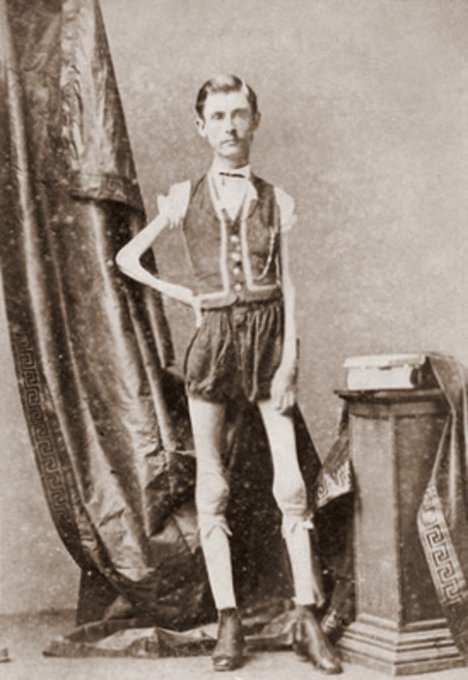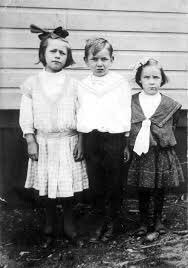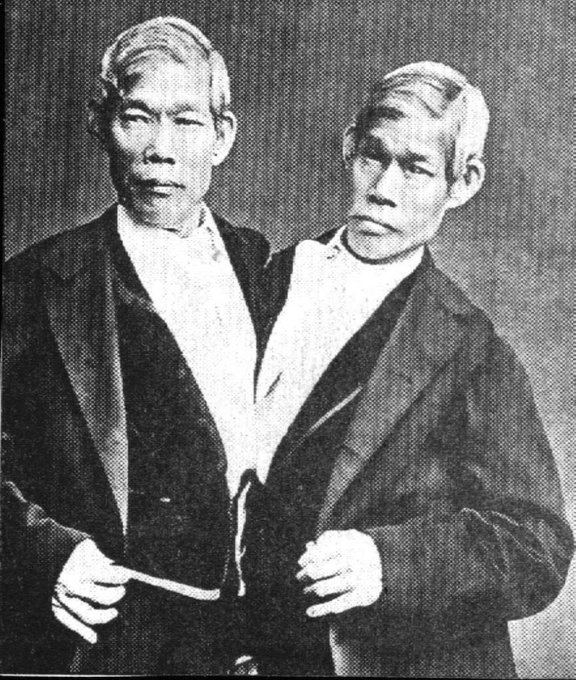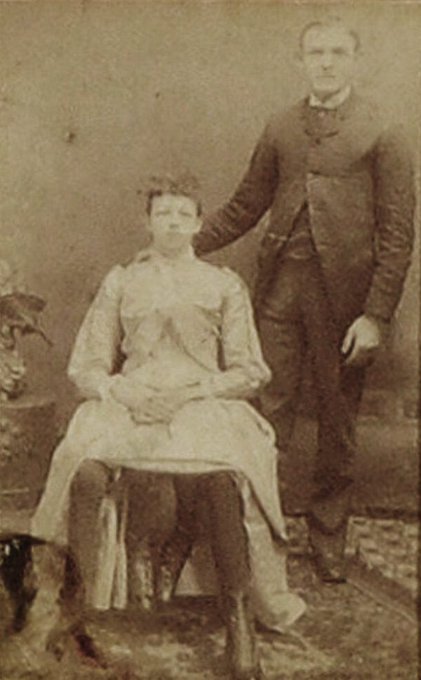The Story of Myrtle Corbin, the Real Life Four Legged Woman

February 5, 2025
•12 min read
Let's investigate the real story of a four legged girl called Josephine Myrtle Corbin.
Josephine Myrtle Corbin was a normal girl by most standards. She was born on May 12th, 1868 in Lincoln County, Tennessee to parents William H. Corbin and Nancy Corbin. Her birth wasn’t marked by anything particularly out of the ordinary. In fact, her mother claimed to have had a typical labor and delivery.
Little myrtle was born a perfectly healthy, active, and thriving baby girl, at three-weeks-old she weighed 10lb and was nursing well, so there was little doubt that she would surely go far in life. Only, life might not be so kind to her in return, because she had four legs. Myrtle’s mother had a normal pregnancy for all intents purposes, and when the big day came she had no reservations that her daughter would be anything but perfect. Shortly after the birth, she learned that the baby was momentarily in the breech position, something which may have proved fatal for both mother and child. Thankfully, such a tragedy was avoided; but the surprises were far from over. When Myrtle was delivered, her parents could hardly believe their eyes. Although the little girl was perfectly formed from her head down to her navel, a tiny, second pair of legs lay flat against her belly.
Rare Dipygus Condition
The field of medicine wasn’t quite so advanced back then, so the idea that a 9 year difference may have caused an extra pair of legs to develop randomly in the womb didn’t seem as farfetched as it does now. But that wasn’t all. The two also looked suspiciously alike, according to medical reports which stated that “they are so much alike in appearance, both having red hair, blue eyes, and fair complexion.” In fact, the parents looked so similar that the physicians felt the need to point out that they weren’t actually blood kin.



P.T. Barnum Circus
After showing off his four-legged daughter to curious neighbors and charging them a dime each, Mr. Corbin realized her untapped potential for further publicity. Wasting no time, he had promotional pamphlets made up and started placing ads in local newspapers to attract people from far and wide to come and catch a glimpse of his marvelous child. Over the next decade or so, William Corbin would take his little girl all over the country where she was exhibited at fairs, sideshows and so-called dime museums.
When Myrtle turned 13 in 1881, the newspaper ads Myrtle’s father had posted naturally attracted the world famous circus owner P.T. Barnum, the dude who inspired "The Greatest Showman", and she was promptly signed up for Barnum & Bailey tours sideshow circuit under the moniker “The Four-Legged Girl from Texas”. Back in the 19th and early 20th century these so-called “sideshows” were a pretty big deal. As the name suggests, a sideshow was a smaller, secondary production that travelled alongside the big-draw circus or carnival. The most popular sideshows usually featured a nightly roster of human oddities or “freaks” that would "perform" for audiences under a single tent for one admission price.I have started a freak show! #freaky

👉Miguu miwili (ambayo ndio ilikuwa ya pacha wake) kati ya minne ilikuwa midogo kuliko miguu yake halisi, lakini ilikuwa imeungana pamoja hivyo haikuwa ikimsumbua sana. Josephine aliolewa na Clinton Bicknell akiwa na umri wa miaka 19, na walifanikiwa kupata watoto watano.....
Four-Legged Woman Illusion
Myrtle’s marriage bought an early end to her sideshow career, much to the chagrin of circus owners up and down the country who were eager to book the one-and-only Four-Legged Girl from Texas in their own shows. Now that they were unable to get the genuine article, shafted showmen were driven to dream up a crafty solution: they’d just make their own fake four-legged girl instead!
It might seem totally ridiculous, but several sideshows decided to dupe their audiences by fabricating their own “freaks” because real-life charming ladies with supernumerary legs were few and far between. In some cases, an attractive lady would appear to have three legs when seated in front of an audience, but, in reality, the third appendage would simply be produced by a second woman seated behind the curtain. This hidden woman would stick her leg through the back of the chair and rest it in a shallow central portion, so that it appeared to hang between the legs of the frontwoman. To create the illusion of a four-legged woman, a special apparatus would sometimes be strapped around the waist of the performer which consisted of two fake outer legs. These false legs, each dressed in matching stockings, would be articulated at the knee, allowing her to go one step further than the fake three-legged woman by standing and performing little dances for the audience.
Pregnancies
In the spring of 1887, about a year after Myrtle and Clinton’s marriage, Corbin discovered that she was pregnant. She’d visited Physician Lewis Whaley in Blountsville, Alabama complaining of pain in her left side, fever, headache, and a decreased appetite.
Despite her unique anatomy, with two sets of internal and external reproductive organs, doctors saw no real reason why she shouldn’t be able to carry the baby to full term. The physician soon determined that it was in her left uterus that Myrtle was pregnant. According to Whaley, upon learning that she was pregnant, Myrtle remarked “if it had been in my right side I would come nearer believing you were correct”. This led doctors to believe that she preferred intercourse on the right side. Unfortunately, Myrtle became gravely ill and Whaley was forced to perform an abortion eight weeks after her initial examination. She was reportedly between three and four months pregnant at the time. Although it seemed that her dreams of a normal family life were now dashed, Myrtle went on to give birth to five healthy children during the rest of her adult life, four daughters, and one son.
The Four-Legged Girl From Cleburne
Besides her continuing presence in medical literature in the United States and around the world, Myrtle maintained a quiet existence in their Cleburne home with her husband and brood of children. But when her children reached adulthood and funds started running low, Myrtle’s showbiz career experienced a fleeting revival around 1909. She dusted off her best dresses and began exhibiting herself at Huber’s Museum in New York at the age of 41 under the new moniker The Four-Legged Girl from Cleburne.
Though it’d been more than 20 years since she’d set foot on stage, Corbin was an instant hit. She’d learned a lot about showmanship during her childhood and would often dress her extra limbs with socks and shoes matching her normal legs. She continued to perform with the Ringling Brother’s circus and even appeared at Coney Island. Within no time, she was making $450 a week, which was a killing back in the day!Death
As the years drew by Myrtle began to retire from showbusiness from around 1915, until, in 1928, she developed a skin infection on her right leg. When it failed to heal she finally visited a doctor in Cleburne who diagnosed her as having erysipelas, a streptococcal infection. Nowadays, a simple course of antibiotics would eliminate the problem and Myrtle would be sent on her way, but these were different times.
On May 6th, a week after being diagnosed, Myrtle Corbin was dead, just one week shy of turning 60. But, just as Myrtle Corbin’s life had been far from ordinary, so too would her burial. Once her coffin was lowered into the ground, her husband James stood watching as the grave was filled with a thick layer of cement. James and Myrtles other surviving relatives waited for an hour, maybe two, until the cement had dried completely before they could breathe a sigh of relief and head back home.

















